Flight Service History 1920-1998 – Air Traffic Control History (original) (raw)
By John Schamel
This page contains a brief history of the FAA Flight Service Station, written by John Schamel, a Flight Service Specialist.
The evolution of Flight Service from the aviation support facilities of 1920 to the present Automated Flight Service Station mirrors the remarkable growth of aviation during this century. In fact, today’s modern Air Traffic Service (ATS) has its origins in those original stations. The following is a brief account of that evolution.
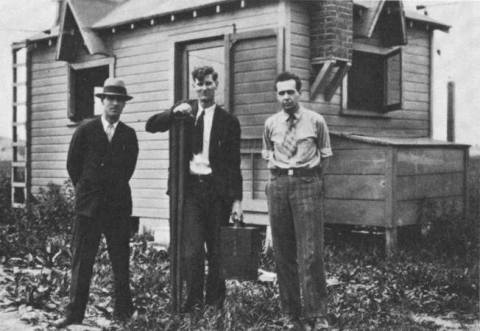
First Radio Station
Click to view enlargement
The United States military entered the aviation arena during World War I, an episode in history that was instrumental in demonstrating the versatility of the newly invented airplane. During the war, a variety of tasks for military aircraft were tried, one being a venture with the U.S. Post Office. In May 1918, the first air mail route was established between New York and Washington, D.C., with other short routes in the eastern states following. The Army turned the operation over to the Post Office in August 1918, transferring all the equipment and personnel. As Air Mail routes slowly expanded, work was started on the transcontinental route. This ambitious plan called for a 2,612-mile route from New York to San Francisco, complete with the 17 primary landing fields having an Air Mail Radio Station (AMRS). The transcontinental route opened on August 20, 1920. All 17 AMRS were operational by the end of 1921. The AMRS specialist made local weather observations, obtained other weather information by radio, and often made their own forecasts. They also assisted in loading and unloading mail, servicing the airplane, and maintaining their own equipment, often building their own radios.
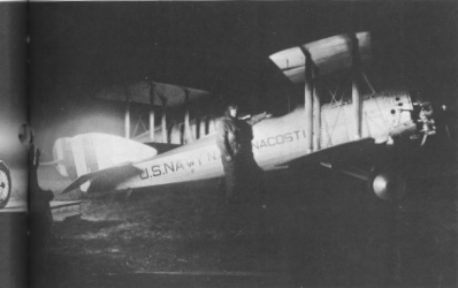
Mail Plane

Transcontinental route from New York to San Francisco, opened August 20, 1920
The passage of the Air Commerce Act on May 20, 1926 brought a variety of aviation-related tasks under the control of the Department of Commerce. The Transcontinental Airway System was transferred from the Post Office to the Bureau of Lighthouses.
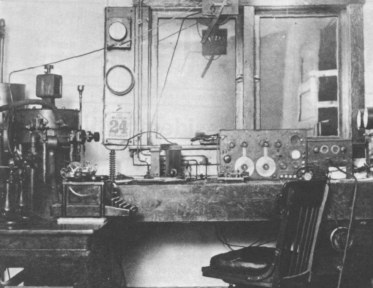
Salt Lake City Air Mail Radio Station, March 1925
A new organization within the Bureau – the Airways Division – took over in June of Air Commerce.jpg (76952 bytes)1927. By this time there were 45 radio operators working at the renamed Airway Radio Stations (ARS).
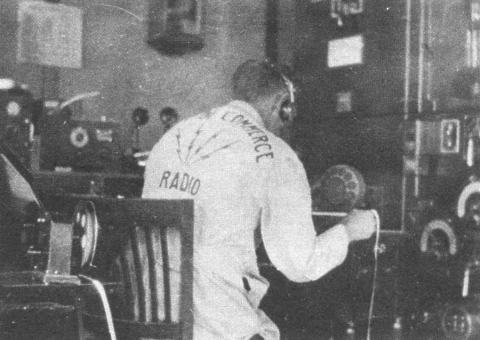
Radio Operator
Early specialists were primarily former maritime radio operators. They were well experienced in building, maintaining, and operating radios for long periods with little or no assistance. These radios used point-to-point telegraphy using Morse Code — known as CW (Continuous Wave) — to communicate with other ground stations. CW was used for air RadioTelegraph_small.jpg (2090 bytes)ground communication until voice radios were developed.
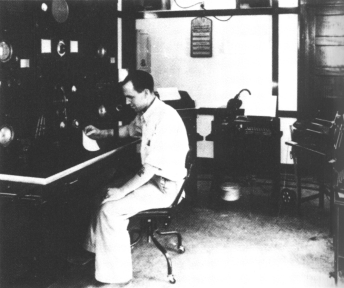
Early Radio Operator
CW was not phased out of the air traffic system until 1948. Weather and aeronautical information was passed along the routes from one station to the next. The standard Morse Code gave way to shorthand methods as radio traffic increased. First Phillips Code was used, which was later replaced with “Q” calls. Many of the “Q” calls are still used in the computerized systems of today.
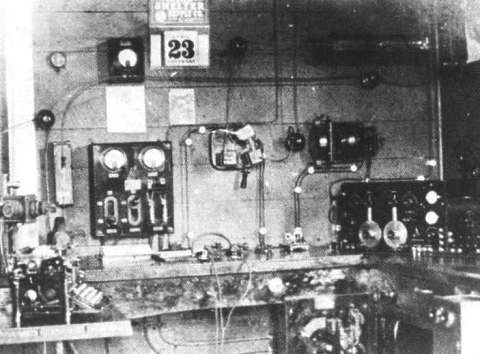
Radio-telegraph 1925.
The radio-telegraph position in a 1925 Airway Radio Station, featuring both
hand and semi-automatic sending keys
Standardized air-ground voice radios became available in the early 1930s as more aircraft became radio equipped. Teletype was introduced to the ARS in 1928. One circuit was available for all traffic, which included message traffic for other government agencies. A second circuit was added later, allowing weather information to be separate from flight information and administrative messages.
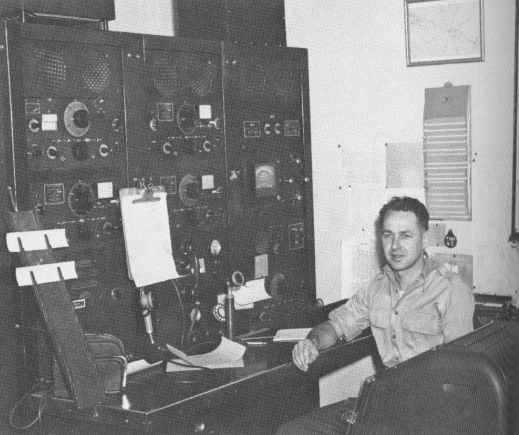
Burley Radio, Idaho 1930’s.
In the early 30’s, the technician took care of teletype and radio equipment at stations
like this in Burley, Idaho
The station keeper’s duties remained pretty much the same. Service wasn’t limited to just mail planes, though. Any pilot stopping at or calling the ARS could get weather information or make a position report. Search and Rescue duties were added to look for overdue aircraft. Specialists still did their own technical maintenance on radios and teletypes, and often maintained the airport’s lighting aids.
Pilots of the era came to rely on the dedication and professionalism of the station keepers, the pilots’ only contact with the air traffic system. This reliance would continue, even with the addition of airport control towers in the 1930’s. Tower controllers were specialized in that airport environment. The ARS controllers still provided the majority of services to pilots nationwide.
The continued growth of aviation lead to the Civil Aeronautics Act in June 1938, creating the Civil Aeronautics Authority (CAA). The CAA took over many of the functions from the Department of Commerce and the ARS became the Airway Communication Station (ACS). Skilled technicians were assigned for maintenance of the electronic equipment in the system. The basis of the Airway Facilities System was formed in the years before World War II
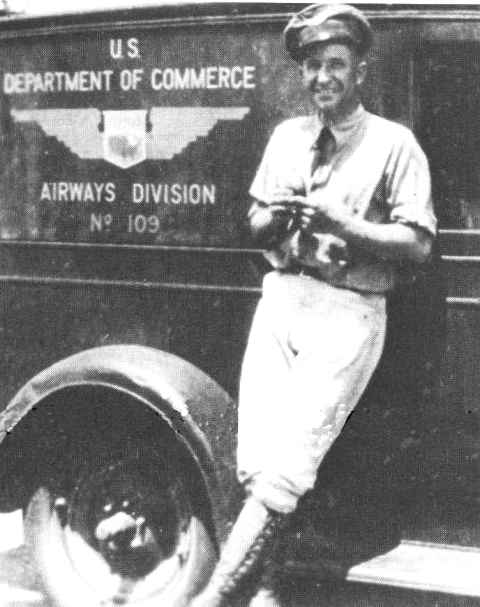
Airway Technician.
Airways maintenance technician, “Dusty” Rhodes takes a break alongside his sector truck in the late ’30s. Unlike their modern counterparts, the airway station keepers of 40 years ago were required to wear distinctive uniforms on the job
With the U.S. entry in this war, the military became the main customer of the ACS. Women joined the controller ranks, with some facilities staffed by only women controllers.
The end of World War II marked the return of commercial aviation. ACS controllers provided services to private pilots, airline pilots, and military pilots. New and improved radio navigation aids helped speed the growth of flying across the nation.
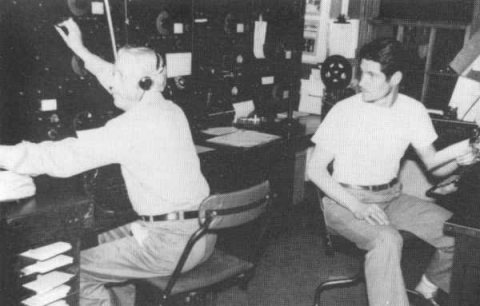
Haines FSS, Alaska. Chief Albert (Whitey) Machin (left) and Carl Shute (right) at work in the Haines Flight Service Station, 1945/1946.
The rapid growth of postwar aviation lead, in part, to the Federal Aviation Act in 1958, merging the CAA and other organizations to create the Federal Aviation Agency (FAA). The name Flight Service Station (FSS) was unveiled in March 1960.
Flight Service controllers continued to provide a variety of services to pilots throughout the nation, however, they were limited to simply reading weather reports and forecasts verbatim.
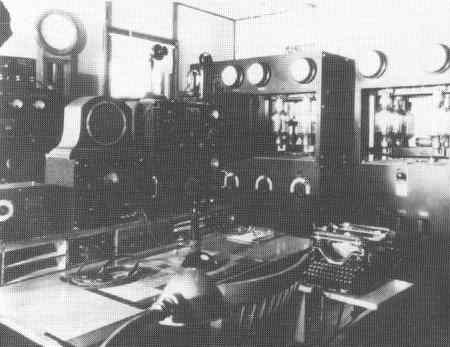
Buffalo Radio, New York. U.S. Airways Radio Station, Department of Commerce Radio Station WWAB was located in Buffalo, NY. The Station held the call letters of WWAB until 1961
An agreement was reached in 1961 between the FAA and NWS. Flight Service controllers were trained as Pilot Weather Briefers and could summarize and interpret weather charts and reports. Pilot weather briefings could be obtained by phone or air-ground radio from any FSS. Improvements in weather services, aimed at reducing weather-related accidents, gave more tools for the FSS controller to use. Flight planning services continued to grow. The FSS became “general aviation’s operations office.”
The Federal Aviation Administration came under the Department of Transportation in 1967. The FSS system continued to grow slowly compared to the rest of the air traffic system. Because of a series of fatal accidents in the 1950s and early 1960s, emphasis was placed on upgrading radio, radar and computer equipment in en route centers and towers. Flight Service continued to work with the teletype systems originally built in the 1930’s.
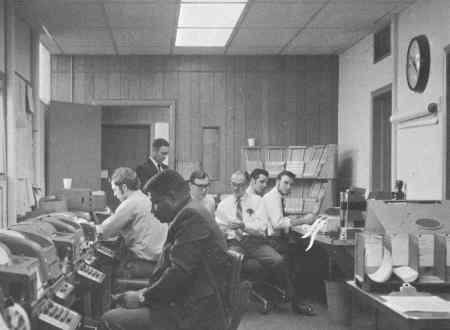
Washington Flight Service after recent modernization in 1969
Considering recommendations from the Civil Aeronautics Board and National Transportation Safety Board, a new program was initiated in 1972. Its aim was to reduce weather-related general aviation accidents. It started on the West Coast at four stations – Los Angeles, Oakland, Portland, and Seattle. It was known as EWAS — En Route Weather Advisory Service. Specially trained and dedicated controllers provide pertinent, current weather information to airborne aircraft. After a very successful test period, it was implemented nationwide with only a minor name change — En Route Flight Advisory Service (EFAS).
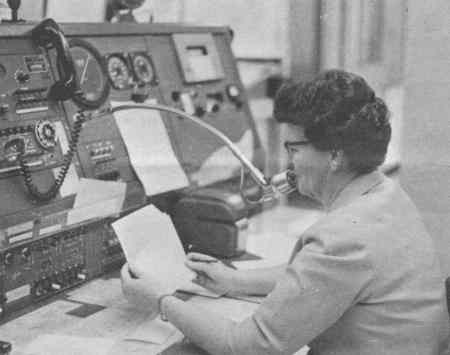
Wichita Falls FSS, Texas. 1970
Flight Service also led the way in another important area in 1972. In June the National Association of Air Traffic Specialists (NAATS) became recognized as the first national air traffic labor union. The NAATS/FAA contract was the first nationwide collective bargaining agreement in the FAA’s history.
During the 1970’s the Flight Service Automation System (FSAS) was conceived. Increasing traffic loads demanded a more efficient way of doing business. Two automation systems were field-tested. MAPS (Meteorological and Aeronautical Presentation System) was installed in the “new” Washington Flight Service at Leesburg, VA. Two other stations were closed and consolidated into the Leesburg facility shortly after it opened. These were the first in a long series of automation consolidations. AWANS (Aviation Weather and Notices System) was installed in the Indianapolis and Atlanta Flight Service Stations. Other stations experienced upgrading of teletype equipment. A CRT-based system — Leased Service A System (LSAS) and later Leased A and B System (LABS) – replaced the familiar yellow paper and forest green mechanical equipment of the teletype system in most stations.
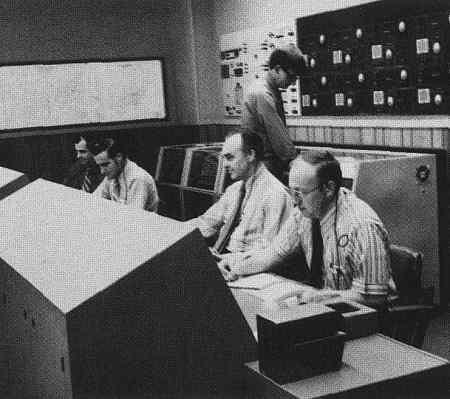
FSS Improvement. A faster, more accurate flight planning program was tested in the early ’70s at the FAA’s National Aviation Facilities Experimental Center (NAFEC) in New Jersey
The best features of both MAPS and AWANS were blended together to form the “Model One” FSS system. The first Automated Flight Service Station (AFSS) was commissioned at Bridgeport, CT on March 3, 1984. 60 more AFSS’s followed over the next few years. Changing technology and funding modified the original plan that called for three various systems to be phased in separately. By the late 1980s, though, it was obvious the original plan was not feasible. A new system, the Operational And Supportability Implementation System (OASIS) is the blueprint for FSS into the 21st Century.
From a high of almost 400 Flight Service Stations in 1973, the system has shrunk to less than 100. Most are the AFSS ‘super stations’. On September 30, 1997, the non-automated stations at New Bern and Hickory, NC were closed. Those facility closings marked the end of the FSS Consolidation and Modernization Program that had been started in the 1970s.
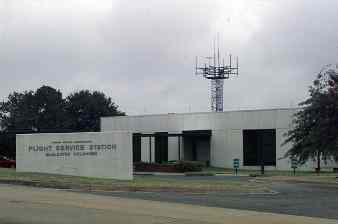
McAlester AFSS, Oklahoma. 1998. McAlester Automated Flight Service Station, Oklahoma, 1998
This quotation, from an article marking the 50th Anniversary of Flight Service, is just as appropriate today as it was then:
“Their day-to-day work is not as dramatic as it once was, nor as widely appreciated by the public, since they do not direct or regulate air traffic.”
“But nevertheless they are the persons most pilots rely on for flight planning data, for guidance over unfamiliar terrain, for steady reassurance when they get into trouble. The men and women who staff the stations haven’t lost any of the dedication of those early pioneer station keepers who helped bring aviation out of its infancy.”
About the author …
John joined the FAA in 1984 and has been an Academy instructor since 1991. He taught primarily in the Flight Service Initial Qualification and En Route Flight Advisory Service programs. He has also taught in the International and the Air Traffic Basics training programs at the FAA Academy.
History has been an interest and hobby since childhood, when he lived near many Revolutionary War and Great Rebellion battlefields and sites. His hobby became a part time job for a while as a wing historian for the U.S. Air Force Reserve.
John’s first major historical project for the FAA was to help mark the 75th Anniversary of Flight Service in 1995.